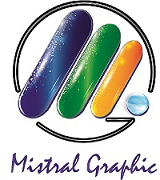Theory
The flip-flop effect
The molecules which are chiral are optically active and furthermore, if these molecules have a twisted structure and if the pitch corresponds to the wavelength of the light, the light is selectively reflected and depends on the angle. This is called the flip-flop effect. As a result, the reflected colors depend on the angle of view.
The interference effect
When the material has a periodic structure with a spatial periodicity of the order of magnitude of the wavelengths of the light, each element of the microstructure separately returns a light wave and the waves from the various elements interfere producing interference colors. Mother-of-pearl has a one-dimensional periodic structure, such as mica. There are also periodic two- or three-dimensional structures, giving rise to interferential colors involving the diffraction-deviation phenomenon of light rays which occurs especially when light is breaking through holes smaller than its wavelength . In the two-dimensional case, we speak of diffraction gratings, because the light waves diffracted by the elements of the microstructure interfere with one another. The same applies to three-dimensional structures, called photonic crystals. The wings of the morpho butterfly and the peacock feathers are magnificent examples of two-dimensional microstructures, while the opals have a three-dimensional microstructure.
 Opale au microscope électronique (J.V. Sanders, Nature, 1964)
Opale au microscope électronique (J.V. Sanders, Nature, 1964)
Introduction du produit
Gamme d’encre obtenue par mélange de poudres ou pâtes qui donne un effet de variation de couleur en fonction de l’orientation de l’impression. On distinguera les irisés simples, les irisés doubles, les OVI à cristaux et les pigments holographiques (rouge, vert et bleu en fonction de l’orientation).Même commentaire que pour les encres nacrées et métallisées concernant l’efficacité des pigments dans des encres ou vernis à réticulation UV. Plus la teinte de fond sera sombre et plus on verra les couleurs d’irisation. Se décline dans toutes les gammes d’encres. Sérigraphie, flexo, hélio et groupe vernisseur.

